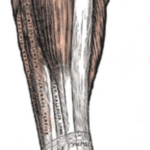Pain in your shins is no laughing matter. You just started a new running routine when you start feeling pain in front of your lower legs which is your shins. It makes it difficult to run, jog, and even for walking. What causes this pain and how can you get rid of it, so you can get back on track with your running regimen?
When running, the constant force on the tendons in front of your legs (shins), causes inflammation in the tendons. It sounds awful I know, but it isn’t that difficult to treat shin splints if you take the right precautions. They can affect anyone at any level of fitness. To the most avid runner, to a beginner just starting out.
At the first sign of a twinge in your shin with every step, you should schedule an appointment with your primary doctor. It may be more serious than just shin splints. It may possibly be a fracture. You certainly don’t want to cause more damage by working out injured muscles. So make sure that you get a doctor’s approval before starting a new exercise regimen, such as running.
To prevent shins splints from happening, you must have the right equipment for the exercise, which in this case of running, the equipment needed will be the proper shoes. Make sure that you have shoes that will support you while running. Everyone has different needs in the type of shoe they wear. If you have high arches, you must wear shoes that will support the arch of your foot, so you don’t strain while running. Make sure before you purchase the shoes, that you try them on and that they fit well. The toes should have a little wiggling room but also should fit pretty snug, so friction won’t be a problem.
Make sure that you stretch your muscles before running to keep them flexible. Exercising cold stiff muscles is a problem just waiting to happen. Stretching before and after exercising is a must. Exercises for stretching your shin muscles. Point your toes for the length of 10 to 12 seconds, stretching the shin muscle. Repeat 2 to 3 times for each foot. This stretching exercise will help improve your flexibility and will also warm up the muscles at the same time. This will help prevent injury for any future shin splints.
Do not push yourself to hard, knowing your limits will save you from painful injury. You will want to gradually increase the mileage and the intensity of your workouts as you improve. If you do feel pain or discomfort in your front lower legs, you need to stop immediately. Don’t push yourself through the exercise thinking that it isn’t anything to worry about. By pushing you are only increasing the inflammation and that will increase your pain. Make sure you take the next day off to rest the muscles. When pain starts, you can place an ice pack on the area for about 10 minutes. You will need to do this 2 to 3 times a day because the cold of the ice pack will reduce the swelling.
When you start a new regimen, either it’s running, swimming, weightlifting, or any type of exercise, you must not push your limits. Make sure to stretch the muscles that you will be using. By doing this you will prevent injury and you will be able to continue to exercise and reach your goals that you set for yourself.




